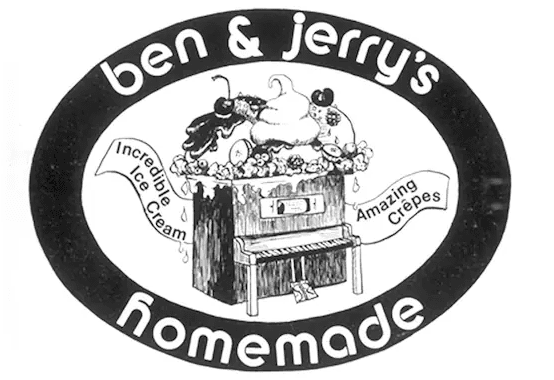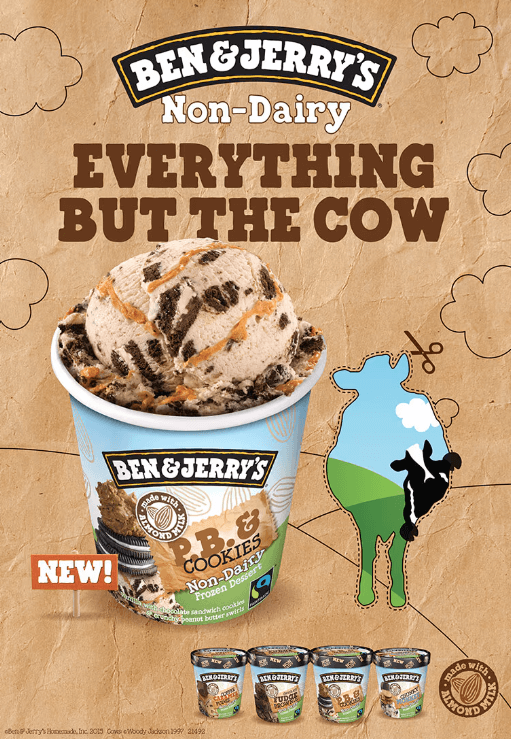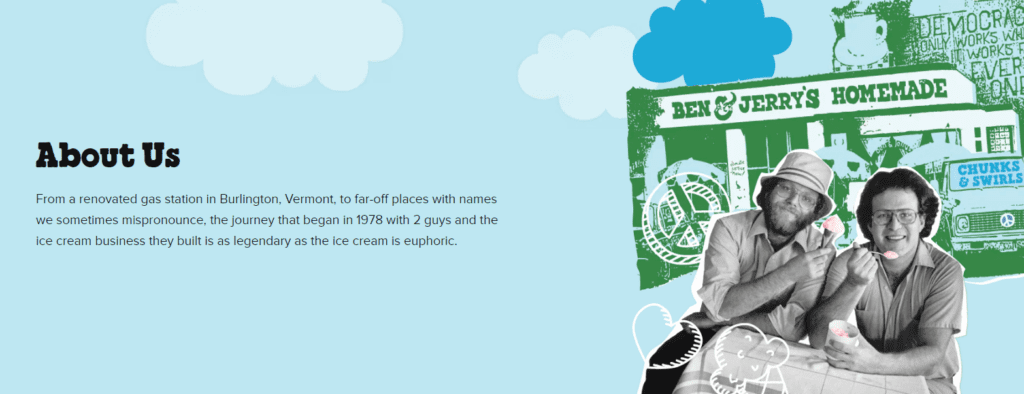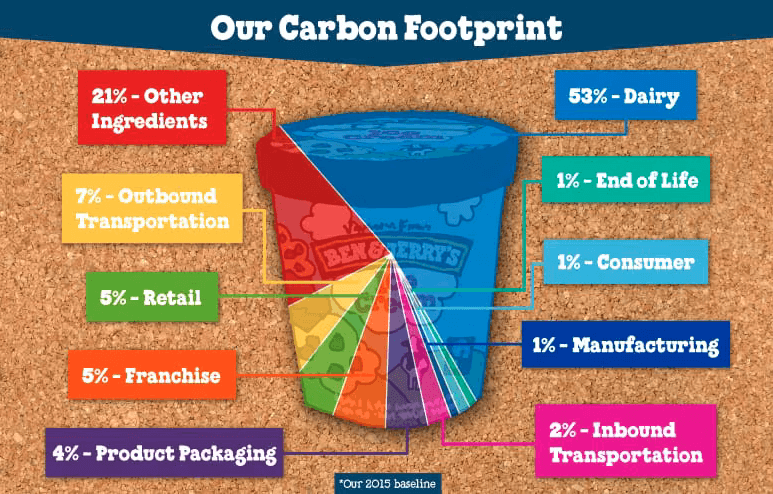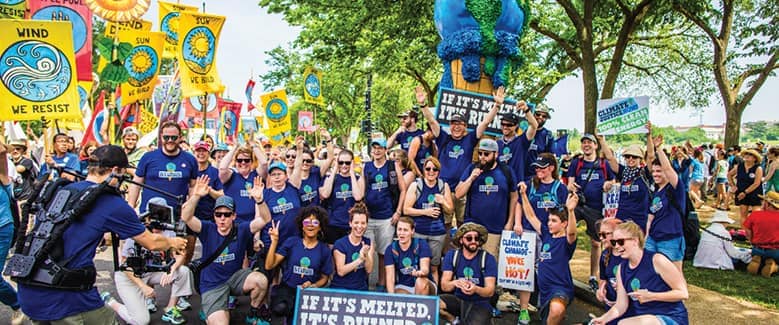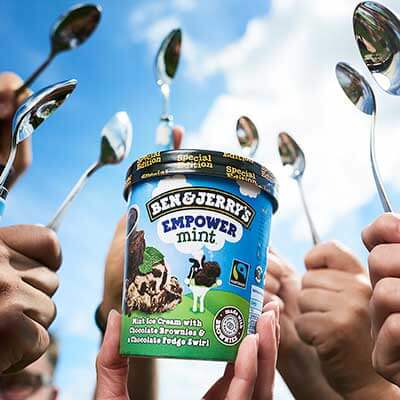How Ben & Jerry’s Built a Brand Around Social Activism
Talk about promoting an ice cream brand. What comes to mind? Bright colors, happy families, and promises of pure indulgence. We know you’re rolling your eyes – you’ve seen it all before. But what if there was an ice cream brand that dared to be different? A brand with a voice, unafraid to speak up for what they believe in? Now that’s something to get excited about, right? Enter Ben & Jerry’s. A brand on a mission to use “ice cream to change the world”.
So, what makes Ben & Jerry’s special? They’ve dared to venture into brand activism, weaving social consciousness into their very core. This bold approach raises a crucial question: how can having a strong voice benefit a brand? In Ben & Jerry’s case, it has helped the brand build authenticity and has helped them carve a niche for themselves in a crowded space.
Intrigued by how Ben & Jerry’s has cracked the code of brand activism? Then this blog is for you. We’ll delve into the secrets behind the success of the Ben & Jerry’s brand. And discuss some takeaways for brands looking to create a strong brand voice, or even those considering venturing into advocacy marketing.
The Ben & Jerry’s Brand: An Overview
With a $12,000 investment, childhood friends Ben Cohen and Jerry Greenfield started an ice cream parlor in downtown Burlington, Vermont in the year 1978. In just three years, the first franchise was opened in Shelburne, Vermont. This all sounds like the story of most ice cream brands and fast food chains. However, what truly changed is the brand’s decision to stand up for societal issues. Before we get to that part of the branding, let’s talk about the core brand elements. The below image shows the first-ever Ben & Jerry’s logo.
However, over the years, the brand’s identity has evolved tremendously. This is crucial because a brand that champions social causes, makes bold statements, and forge its own path, requires a strong identity. It’s this identity that serves as the brand’s personality, shaping how consumers perceive it.
The logo
The below image shows the current logo used by the brand. As can be seen, there has been a drastic transformation in the logo design.
From the font to the structure and the type, every little thing has been updated. The logo is now simpler and more straightforward. This design perfectly mimics the no-nonsense approach of the brand. Besides, the sole focus is now on the company’s moniker.
The design is also versatile considering that the company now seamlessly incorporates diverse marketing channels for their promotions. As for the font, it embodies the brand’s lighthearted and whimsical personality.
Other brand elements
When we talk about the brand elements of Ben & Jerry’s their cow mascot is perhaps the first thing you recall. The signature illustrated cow that has been appearing on the packaging of several of their ice creams and also on their marketing graphics.
Did you know that her name is Woody?
Woody was first illustrated by a Vermont-based artist, Woody Jackson in the year 1983 and has since then been a pivotal component of the brand’s identity. So much so that she even made an appearance on the non-dairy collection packaging.
Other than this, the phrase “happy cows” was also part of the branding but then was dropped following lawsuits challenging their claims and about misleading packaging design.
Finally, there is the quirky and raw illustrated visual theme that’s predominantly used in their branding.
These elements have been meticulously woven into the Ben & Jerry’s brand over the years seamlessly sculpting their bold and unique personality.
Ben & Jerry’s Brand Activism Strategies
Consumers have a huge respect for brands that raise their voices against societal issues – brands that take a firm stand and are clear about their values. However, there is a lot of fake brand activism these days. Consumers have a knack for figuring out the difference between brands that genuinely care and those that simply advertise that they do. Amidst this, Ben & Jerry’s is one of the few brands that have managed to preserve their authentic voice.
Early days of brand activism
Ben & Jerry’s has been focusing on brand activism from the get-go. It all started in the 1980s when the Ben & Jerry’s Foundation was founded and they pledged to set aside “7.5% of the company’s annual pre-tax profits” to community-focused steps. And then their first major drive was against the use of “Recombinant Bovine Growth Hormone (rBGH)” in ice cream.
In 1989, Ben & Jerry’s became a frontrunner in the fight against Recombinant Bovine Growth Hormone (rBGH) in dairy cows. This decision wasn’t just a marketing ploy; it reflected their core values of sustainable and ethical food production.
This stance, along with their consistent opposition to GMOs (Genetically Modified Organisms), solidified their reputation as a company that walks the walk when it comes to social responsibility. Finally, to ensure their commitment translated into action, Ben & Jerry’s sources milk from farmers who don’t use rBGH to treat their cows.
Tell the FDA that you have a right to know what is in your food, and support national mandatory GMO labeling! https://t.co/TR81StAXgT
— Ben & Jerry's (@benandjerrys) December 1, 2014
Paying attention to their target demographics
One of the secrets to effective brand activism is to ensure that the cause you choose aligns with your brand’s target audience. This adds to the authenticity of your brand activism.
Children are evidently the most important demographic for ice cream brands like Ben & Jerry’s. Therefore, choosing a cause that benefits these target demographics adds much more meaning to their approach. Ben & Jerry’s has been a strong advocate of various causes for children.
They started as early as 1992 when they collaborated with the non-profit, Children’s Defense Fund, to work with consumers in sending postcards to Congress, about issues concerning children.
Taking their commitment overseas, Ben & Jerry’s UK launched the “Flying Friesian” (a retrofitted tour bus) in 1999 to raise funds for children in need.
Making it official
Several brands talk about taking a stand but Ben & Jerry’s shows this in action. A proof of this will be the official “Head of Global Activism Strategy” title within their organization. This position, currently held by Chris Miller, isn’t something you’ll find at most organizations. This move highlights the brand’s dedication to weaving social good into the very fabric of their business.
Through steps like these, they are sending out a clear signal that their efforts go beyond one-time advocacy campaigns!
These dedicated thought leaders within the company also take part in global conferences and discussions to actively talk about the issues they stand for. The below post highlights one such discussion that was a part of the SXSW (South by Southwest) event. Through events like these, the brand continues to actively engage their consumers and others who share the same values.
Come check out the “Corporate Activism: Speaking Out and Taking Action” panel with our Head of Global Activism Strategy Chris Miller at the JW Marriott Salon GH at 4.00pm. First 300 in the door get a coupon for a FREE pint of Ben & Jerry’s. 💥🍦https://t.co/8NcxqRUYVW
— Ben & Jerry's (@benandjerrys) March 11, 2023
Tackling the big issues
The brand understands the need to address broader issues that affect everyone. The issues that need to be immediately addressed.
One of the most pressing concerns of our time is climate change. This issue transcends demographics and has far-reaching consequences. Evidently, Ben & Jerry’s hasn’t shied away from taking a stand.
The above campaign titled “If it’s melted, it’s ruined” is one of the oldest from the brand. For more than a decade now they have been consistently curating campaigns to raise awareness and to initiate conversions about climate change.
Besides talking about climate change, they have also been striving to act against factors that contribute to them. For instance, they have been continuously focusing on reducing their carbon footprint.
They also host offline events to stay in the loop and to keep the discussion alive. This further helps the brand build a community of like-minded people.
Paying attention to the little things that often go unnoticed
Not all social issues receive equal media attention. Ben & Jerry’s uses their platform to raise awareness about causes that might otherwise go unnoticed. Venturing beyond the headlines, they pay attention to the issues that a few other brands might overlook.
For example, they introduced the “Home Sweet Honeycomb” flavor in 2017 to support their “Together for Refugees” campaign.
Give a warm welcome to Home Sweet Honeycomb; a flavour with a sweet mission. Learn more >> https://t.co/90t0ehZ1lX pic.twitter.com/ASIUuZ6qOX
— Ben & Jerry's UK 🧡 (@benandjerrysUK) August 23, 2017
But beyond the new flavor, the brand also collaborated with the International Rescue Committee. As a result, the brand was able to garner over 30,000 emails sent to MPs across Europe. These were to urge them to support legislation to “resettle refugees safely into Europe”.
Sweetening the deal with signature flavors
What does it take to seamlessly weave brand activism into your marketing strategies? Ben & Jerry’s way of doing it is to create signature flavors that stand testament to the cause they are discussing. Like the “Home Sweet Honeycomb” we discussed in the previous section. There have been other such instances as well.
For example, the “Save Our Swirled” flavor was introduced in 2015 as a symbol of climate activism. The same year, “I Dough, I Dough” was launched to celebrate the Supreme Court’s recognition of marriage equality.
In 2016, they introduced the “Empower Mint” flavor to honor the anniversary of the Supreme Court’s ruling against segregation in school. Similarly, they have gone beyond a simple static image or a video message to discuss a cause.
This strategy has worked for the brand because new product launches, new flavor launches, in this case, generate media attention and create a buzz. This way, the chosen cause is also put in the spotlight.
Moreover, the brand made each of these flavor launches relevant to their causes by creatively crafting flavor names linked to the respective issues. This helped evoke excitement about the flavors and encouraged consumers to learn more about the cause and get involved too.
Bravely venturing even into controversial causes
Ben & Jerry’s is one of the few brands that isn’t afraid to take a stand even for issues that spark controversies. Issues that other brands find too risky to get involved in.
A prime example of their bold activism is their stance on Israeli settlements in the occupied Palestinian territory. In the year 2021, Ben & Jerry’s announced that they would no longer sell their ice cream in these settlements, sparking significant controversy.
From positive media coverage to negative retaliation from some political figures, their move received mixed responses. However, this is a clear indicator that the brand does not deploy cause marketing for the sake of it. Bold steps like these also end up boosting the brand’s authenticity.
Several consumers value brands that share their social and political views. By taking a bold stance, Ben & Jerry’s connects with customers who share their commitment to social justice.
Now that we’ve explored Ben & Jerry’s unique approach to brand activism, let’s delve into some key takeaways that other brands can learn from their success.
A spoonful of Ben & Jerry’s Brand Activism Wisdom: Summary of Lessons Learned
Several brands have clearly defined brand activism strategies. Whereas some take momentary steps through advocacy marketing. And others merely scratch the surface. So, if you are looking to leverage brand activism as a strong tool to establish your brand’s identity by drawing inspiration from the Ben & Jerry’s brand, then here are a few things to remember:
- Tap into the power of partnerships by collaborating with organizations and non-profits relevant to the chosen cause. Their authority in the industry helps amplify your message. And the trust they have established in their audience helps enhance your brand’s credibility in the campaign.
- Actively involve your customers. This helps with community building.
- Effectively utilize digital and physical channels to spread your message. This ensures that you can reach the right audience right where they are.
- Stay authentic and stay consistent. Customers easily spot causewashing and this can take a toll on your brand’s reputation.
KIMP Tips: Seamlessly integrate your brand elements into these cause-marketing campaigns. From the name you choose for any limited edition products introduced as part of the campaign to the packaging design tweaks and other details, getting your brand elements to reflect the change adds to the significance of your cause marketing efforts.
Need help customizing your core brand designs to resonate with your campaigns? Get KIMP!
Mimicking Ben & Jerry’s Strategies in Brand Activism
In summary, Ben & Jerry’s success story is a testament to the power of authentic brand activism. Their clear values, consistent activism, and focus on a bigger purpose have won hearts. Every pint feels like something more than ice cream – it feels like a chance to be part of something good.
But remember, the key to brand activism, the key to standing up for a cause is good design. Design that communicates your message clearly and powerfully. Need help crafting a cohesive brand identity that resonates with your audience? Get KIMP!
Register now for a free 7-day trial!


